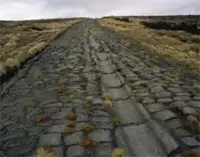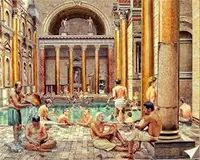The Rise and Fall of the Roman Empire
Part 1: The Early Years The Roman Empire ruled much of the known world for five centuries, making a wide-ranging mark on history. 
The Empire began in 27 B.C. with the end of the second of two civil wars that had punctuated the end of the Roman Republic. Emerging as the sole power after that second war was Octavian, the adopted son of Julius Caesar. The Senate in 27 B.C. granted Octavian supreme power in the form of the Principate. He took the name Augustus and became Rome's first emperor. The ascension of Augustus brought with it the beginning of more than two centuries of relative peace, known as the Pax Romana. This unprecedented period of little unrest allowed Rome to repair the damage done by the most recent intense political and military struggles and embark on another period of expansion and conquest, while at the same time continuing one of the most powerful economic engines the world had ever seen. The advent of the empire meant the presence of an imperial treasury, controlled ostensibly by the emperor. Funds were not unlimited (although it sometimes seemed that way), and so taxes were necessary, if not popular. Roman provinces traded with one another, but the empire as a whole also traded with other civilizations, as far away as China and India, along the Silk Road. It was true during the Republic, as Rome added more and more territory to its sphere of influence, but certainly during the Empire, as the frontiers kept being extended seemingly ever outward, that one of the primary reasons for the Romans' success was the superiority of the roads, which enabled relatively rapid trade to take place but which also, more importantly, enabled rapid transport of troops and materiel from place to place.
In the same way, the Romans imbued the lands they conquered with varying levels of "Roman-ness," building baths and temples and amphitheaters and forums and aqueducts and other examples of Roman architecture that were usually superior to what was already there. Much of this building work was done by soldiers, members of the legions, as in the case of the roads, but a large part of the backbreaking work was performed by slaves. Next page > Tiberius to Nero > Page 1, 2, 3, 4, 5, 6, 7, 8, 9 |
|
Social Studies for Kids
copyright 2002–2024
David White







